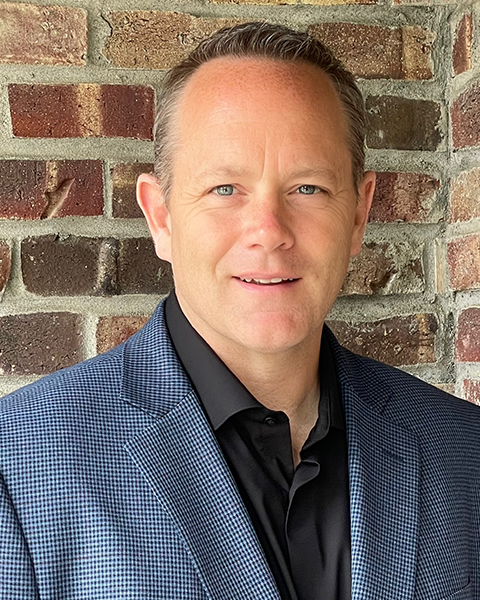
How to Start Change Management Effectively
Successful change management starts with understanding the people side of change and using a structured methodology. With those two basic ingredients, everything else—from engaging sponsors to building a culture of change—begins to fall into place.
When moving from a communications role into one that includes change management responsibilities, you need to build a new set of skills to bridge the gap between the two disciplines. No matter where you are in the learning process, or the constraints you face with change, addressing these areas can improve your change management approach:
1. Understand the people side of change
Leaders can forget that organizational changes affect people and the way they do their jobs, often overfocusing on the technical aspects. It’s critical to understand that project success depends on people’s ability to adopt new processes, systems, behaviors, roles and more.
To be successful, change managers collaborate with project managers and solutions developers to integrate the technical side and people side of change.
Prosci Unified Value Proposition

The uncertainty and challenges of change can also overwhelm people. Change elicits emotions ranging from excitement and anticipation to fear and anger. If you don’t address these reactions, people will exhibit resistance behaviors that can derail project success and increase attrition.
An individual change model like the Prosci ADKAR® Model enables you to support individual people throughout the change process. It helps you identify and resolve the barriers that keep them from moving forward.
Based on the fundamental idea that organizational change only happens when individuals change, our ADKAR Model enables you to:
- Put people at the center of change
- Focus on achieving outcomes
- Measure effectiveness
- Make meaningful adjustments as needed
Prosci ADKAR Model

2. Use a structured change management methodology
A structured change management methodology establishes a systematic approach, common language, quality standards, and other activities designed to achieve successful change. More than 25 years of Prosci research shows that effective change management correlates with significantly higher levels of success.
Correlation of Change Management Effectiveness and Results

The Prosci Methodology is comprised of the Prosci Change Triangle (PCT) Model, Prosci ADKAR Model, and Prosci 3-Phase Process. Here’s a quick overview:
Our PCT Model establishes a framework for understanding the critical aspects of project health and how they interrelate. Used throughout the lifecycle of a project, the PCT Model offers clarity by assessing variables that can pose the greatest risk for projects.
Our ADKAR Model creates a common language that everyone understands. The ADKAR Model enables you to guide individuals through a change and addresses barrier points that can prevent or delay project success. You can also use ADKAR Model as an assessment tool and as an easy-to-follow roadmap.
While ADKAR enables individual change, our flexible 3-Phase Process enables you to scale it at the organizational level and align with organizational goals. The phases address the activities change management professionals perform alongside project teams to define success and implement a comprehensive approach. As a result, everyone knows what they are attempting to achieve, who the change impacts, and the type of activities needed to achieve successful change.
Prosci 3-Phase Process

3. Engage sponsors and senior leaders
One of your primary tasks as a change manager is to prepare and equip sponsors and senior leaders for their employee-facing roles. Results from our Best Practices in Change Management – 12th Edition research rank active and visible sponsorship as the top contributor for change management success.
You can prepare and equip sponsors for their roles by helping them apply the ABCs of Sponsorship.
ABCs of Sponsorship
|
A – Active and Visible Participation throughout the Project |
Champion the change, allocate necessary funding for change activities, and support the team. |
| B – Build a Coalition of Sponsorship | Mobilize other key business leaders and stakeholders so they can advocate for the change and legitimize it in their part of the organization. |
|
C – Communicate, Support, and Promote the Change to Impacted Groups |
Communicate the importance of the change from a leadership perspective. Directly engage impacted employees. |
4. Develop effective communications
You have built your career around developing effective communications. To deliver effective change management communications, you must align your expertise with change management best practices.
Be sure to use preferred senders to relay your messages to the appropriate audience. Our research shows that employees prefer to receive messaging from an executive leader and their supervisor.
Preferred Senders of Change Management Communications
.webp?width=700&height=525&name=Blog%20Images-PreferredSenders-Callouts%20(2).webp)
Common pitfalls in change management communications—under-communicating, inconsistent messaging or ignoring feedback—quickly undermine your efforts. Ensure clear, consistent communications across the right channels at the right times and adjust as needed.
If you don’t answer employee questions during change, they will provide their own answers—leading to misinformation and rumors. At the start of a change, your job is to ensure that messages answer:
- Why are we changing?
- What is the risk of not changing?
- How does the change impact me and my group?
- How will this change affect my day-to-day responsibilities?
- What is in it for my team or workgroup?
5. Coach people managers on their CLARC roles
Given their close working relationships with employees, people managers have the greatest influence on how their teams perceive a change. This is why successful change managers help people managers perform the CLARC roles:
Overview of CLARC Roles
| Communicator |
People manager shares personal impact messages about the change |
Builds awareness of the need for change with the team. Answers, “Why are we doing this?” “How does the change impact me?” and “Why should I support the change?” |
| Liaison | People manager engages with and supports the project team | Reinforces efforts to sustain the change by providing feedback from employees to the project team. For example, concerns about design, usability and functionality. |
| Advocate | People manager demonstrates support for the change | Influences employee desire to participate in and support the change. |
| Resistance Manager | People manager identifies and mitigates resistance behaviors | Proactively identifies barriers to change, uncovers root causes of resistance, and supports people to remove barriers. |
| Coach | People manager helps employees through the change process | Develops knowledge about how to change and the ability to implement required skills and behaviors. Ensures that employees receive necessary training and support. |
In my experience as a change leader, I have found that most people managers struggle with managing employee resistance effectively. When they’re confronted with resistance behaviors, you need to help them understand that resistance is normal. In most instances, uncertainty about success and the fear of the unknown provoke the highest levels of resistance.
To mitigate resistance, you can apply a structured approach that includes resistance management best practices to:
- Help people managers develop an intentional response to resistance
- Address the impacts of the change on daily work
- Ensure credible communication about the change
- Show how the change aligns with values
6. Monitor and measure performance
Prosci research on change management metrics shows a direct link between measuring compliance and the overall performance with meeting and exceeding project objectives.
Your communications expertise factors into creating surveys and facilitating focus groups to gauge the effectiveness of your change management approach. From there, you can use the findings and feedback to modify your approach.
If you follow a structured approach to change, you will start by engaging with key stakeholders to create a common definition of success. With this future-state goal in place, you can track engagement levels, feedback scores, proficiency, adoption rates, and other factors to gauge progress and effectiveness.
7. Foster a culture of change
Fostering a culture of change begins with building awareness of the need for change management across the organization, starting with leadership. This includes encouraging open communication where feedback is welcome. Involving impacted people in creating solutions helps them feel heard and will improve their desire to participate in a change.
You can build a culture of change by helping employees learn more about change. Our tailored change management training programs are designed to help people at all levels of your organization understand the importance of the people side of change and how they personally contribute to success.
Learn How to Start Change Management as a Communications Professional
Growing as a communications professional and into a change manager role may seem daunting, but your communications expertise gives you a head start on bridging the skills gap. Even if you have already applied change management, understanding the research-based fundamentals will help you drive more successful change in your organization. By leveraging the right change management approaches and tools, and honing change management skills, you can effectively navigate organizational change with confidence.

.png?width=614&height=200&name=7X%20more%20likely%20circles-2023%20(1).png) Source: Prosci Research Hub ©2023
Source: Prosci Research Hub ©2023



